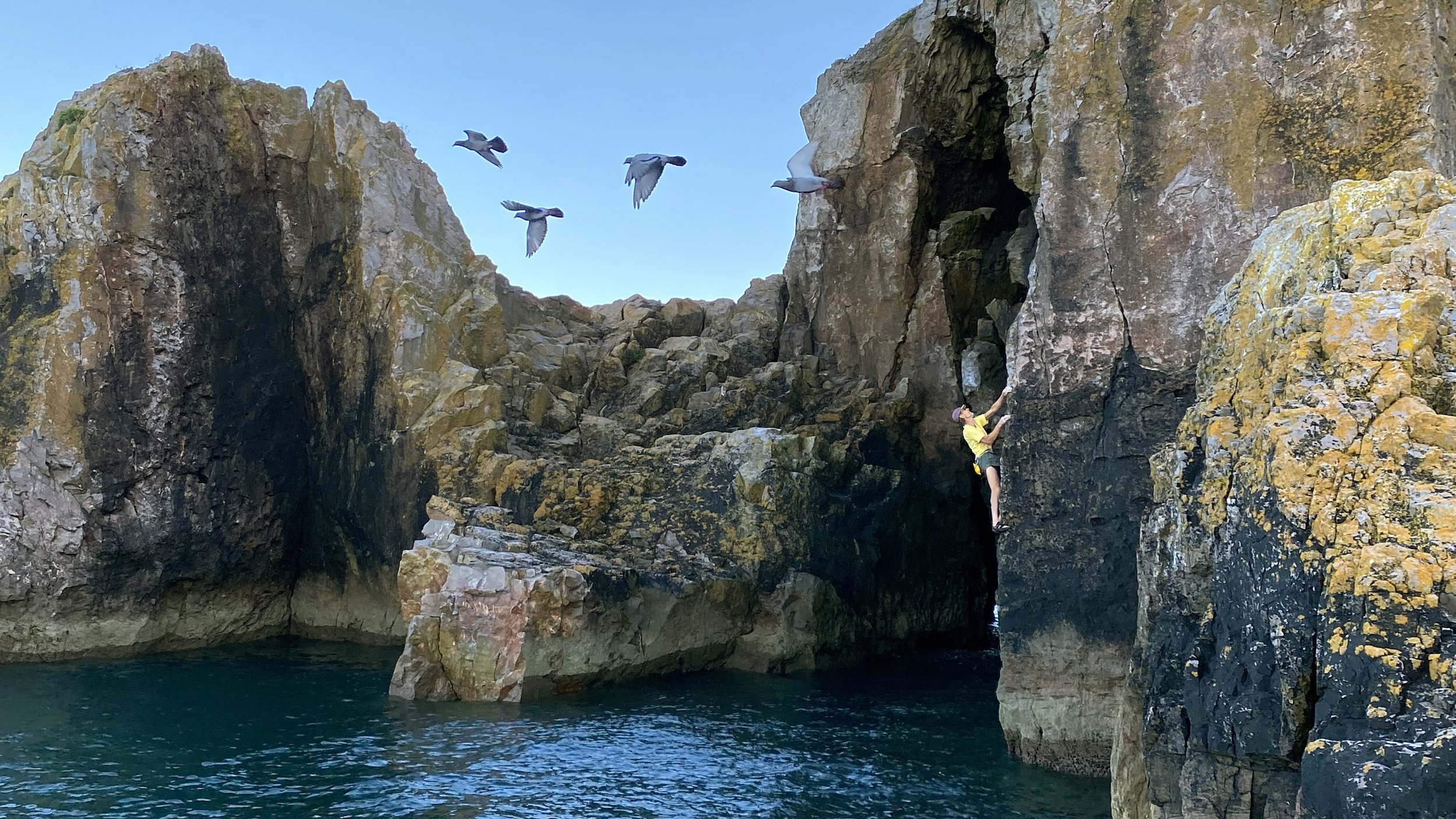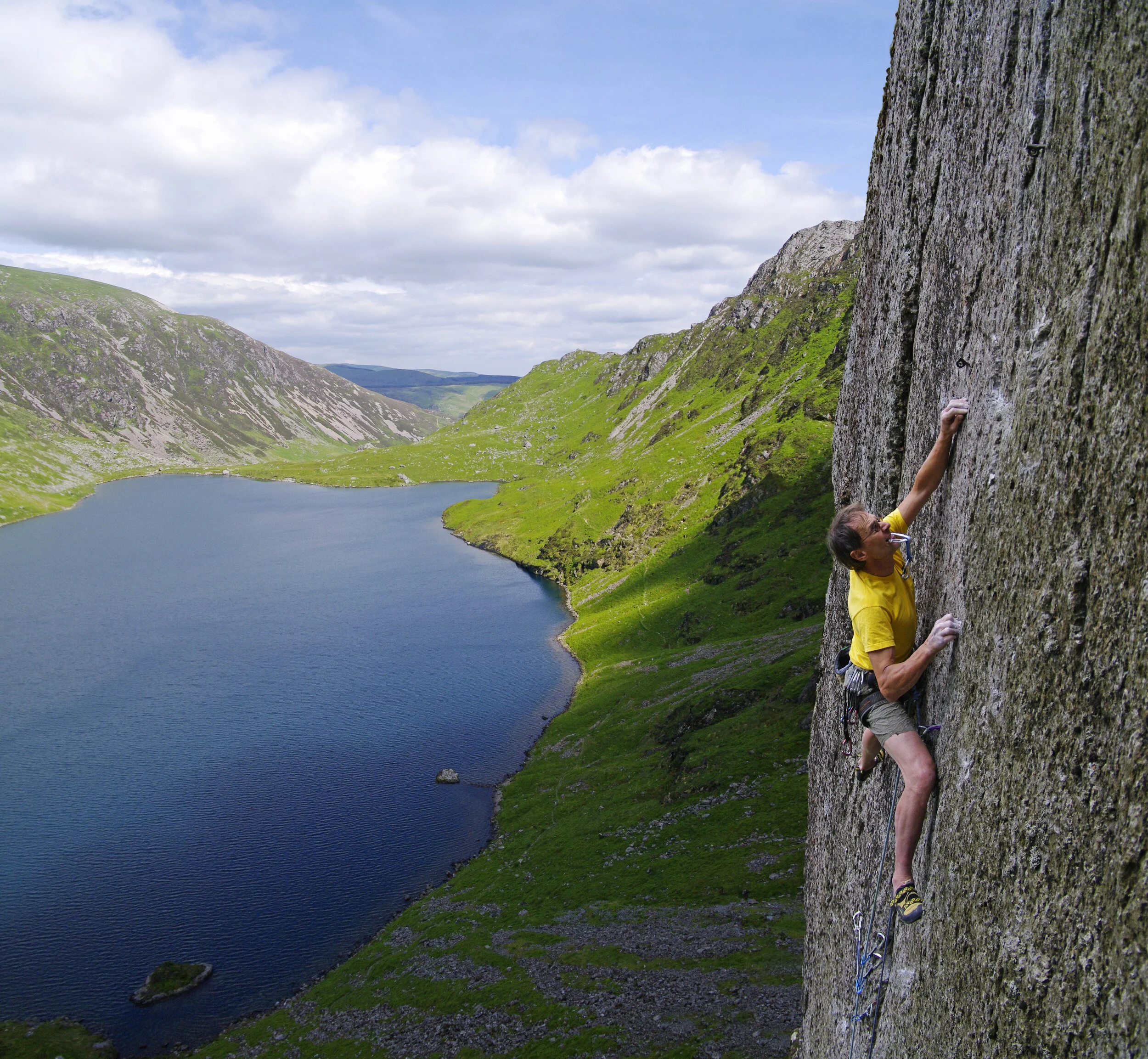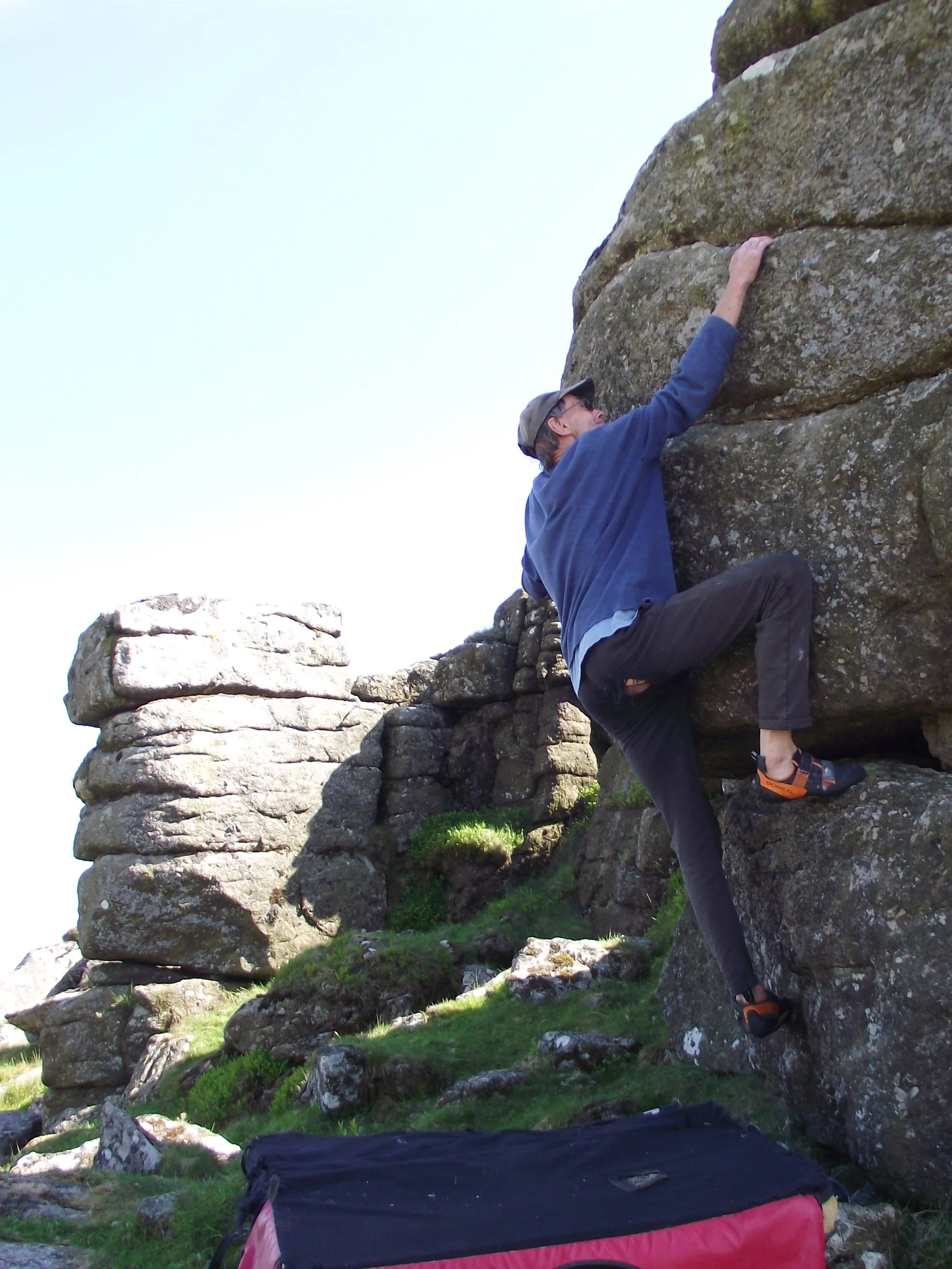
Copyright Photographs
Unless attributed otherwise all the photographs on this website belong to the copyright owner Martin Crocker. No other party has permission to publish them or to use them for any purpose. Should you wish to consider downloading and publishing a photograph from this website, kindly get in touch with me in order to come to a personalised arrangement.
The West Country
This is my home ground (and that of many other climbers). There are lots of climbing sites on and off grid here including bigwigs Avon Gorge and Cheddar Gorge. I grew up with them as a fumbling schoolkid; they’re old friends. In this section I’ve tried especially to unveil the climbing opportunities along our North Somerset coast: pure esoteria for sure, but bound to provide countless hours of fun for the few if not the many. You’ll find other content about these places, and my involvement with their exploration, elsewhere on this website including After Balcombe, an article published in High magazine in 2004.
Left: The Lich (HVS), Main Wall, Avon Gorge. Pic: Martin Crocker
South (and mid) Wales
In the early-70s my Somerset climbing club would frequently visit South Wales. And a few years later I found myself studying in Cardiff Uni. In 1986 I married Beverley from Newbridge, Gwent. With such strong ties it was inevitable I was drawn to probing the area’s unclimbed rock. Busy, even obsessive, days in the 80s and 90s generated hundreds and hundreds of routes, ultimately to be immersed by the calm of the mountainscapes of the Brecon Beacons National Park (BBNP). Here, in the middle of beautiful nowhere, a revelation of Twrch Sandstone bouldering awaited. It felt like completing the circle of a climbing life, launched while roaming the fells of The Lakes with my dad in 1969. So I’ve prepared a series of free guidebook downloads to the BBNP. But be prepared: walk-ins are up to five miles long – those legs are important too.
I’ve reeled off a slideshow of some of my interactions with Gower & SE Wales, evidencing changing times, and meeting some of the characters along the way. It’s called The Bridge.
Right: The first ascent of Legacy (E6 6b), Craig Cau in 2014. Pic: Don Sargeant
Deep Water Soloing
Imagine a world without gravity. Deep water soloing is about as close you can get to it. By the late 90s I’d become hooked big-time. Countless days of adrenaline-fuelled excitement were supplied by the cliffs of Portland, Torbay, and Ogmore, a perfect counterpoint to the routine of deskbound ‘9 til 5’. Even to this day I’ll frequently hang out above the sea, my daughter’s 20-year old Freddie the Frog waterwings smiling unflinchingly to either side. I’ll try progressively to add some useful content to this section (in addition to the Ogmore vids embedded in the videos page).
Left: A F6b+ deep water solo at Cales Coves, Menorca. Pic: Jonathan Crocker
The Exmoor Coast
England’s highest sea-cliffs, and its most mysterious coast?
Right: Terry Cheek following on the first ascent of Severance (E1) in 2003. Pic: Martin Crocker
South Devon
It’s hard to think of any rock-climbing neighbourhood in the UK as diverse and exciting, or even as exotic, as Torbay. Tortured limestone beds fold climbers’ movements this way and that, testing their aptitude for invention. Coastal quarries scour headlands to create acres and acres of complex rock geometry, their dusty slabs drawing power from arms to legs. In Torbay, fun is an equal partner to fear: and all the opposites have a vote: slabby, overhanging; red, white; rough, smooth; south-facing, north-facing; bolted, unbolted – all set above a turquoise 17 ℃-sea redolent of the Med. Oh, and it’s the deep water soloing mecca of the UK.
Sea-cliff climbing in the southwest began to enjoy a buzz in the mags and books in the late 60s and early 70s. Readers were left at the mercy of becoming enthralled by Ted Pyatt’s A Climber in the West Country or Peter Biven’s reports of sea-level traversing under impossible overhangs with no prospect of escape for thousands of feet. My visits to Torbay started in 1972 – for Moonraker , of course, and to make early repeats of Crinoid and Grip Type Thynne. The word in land-locked Bristol was there were adventures to be had in Torbay, ably guided by Pat Littlejohn’s 1971 ‘blue book’. Ever since, South Devon has pulled me back time and time again: from the impulsive mid-to-late 80s, through the deep water dance rave of the mid-to-late 90s, and so to the calm of present day re-explorations.
While liaising with the South Devon guidebook’ authors, it struck me how well Torbay climbing had matured. Inclusivity its watchword, Torbay seems to pay homage to all its contributors, embracing climbing styles that will otherwise have been locked down in a less heterogeneous landscape. So much to explore: you only have to open the South Devon guidebook to spoil yourselves rotten!
But Torbay is not my neck of the woods, and I’ve only introduced a South Devon title to make it easier to access the new routes’ download in which I keep a running record of routes which could be new. It’s for anyone to use on the crags; and for harmonizing with route details recorded elsewhere, to aid future not-for-personal-profit guidebook producers. (And please refer to copyright statement on the Downloads page.)
Pic: working the first ascent of Just Revenge (E7 6b) in 1986. Crocker coll./Jim Robertson
Dartmoor
For the time being here’s a compilation of things for rationalising with other things reported or not elsewhere. No serious claims of originality, just a piece of the 365 jigsaw, intended to be functional: Dartmoor Miscellany.
Pic: Tower of Power (f6a+)
Northwest France
Thanks to 30 years of holidaying en famille in northwest France, the crags here have become maison de la maison. In the early years the lack of information and guidebooks only added to the challenge and the pleasure of finding obscure places that got just a line or two on COSIROC. Riverbank outcrops, boulders on sandy beaches, bucolic woodland quartzites, and Côte Sauvage: so much space for discovery! It may take a few years but I’ll endeavour to populate this section with a few of my favourite places, if I can read my old notes. Meantime here are a couple of articles I wrote that might provide a heads up: first, Alternative France for the Family published in High magazine in 2002, and, second, Armorica, published in Climb in 2012. I also produced a very minor topo to Pointe de Squewel (Ploumanac’h), a deep water solo spot I developed way back when (translated by my wife, Beverley). I made it available on an informative French website: krimpadenn.fr
Left: A f5 at Neiz Vran, Kerlouan, Bretagne. Pic: Jonathan Crocker
‘Crag X’
Who knows what might go in here?

Revisiting All Because… F6a+, Berry Head Pic: Jonathan Crocker







